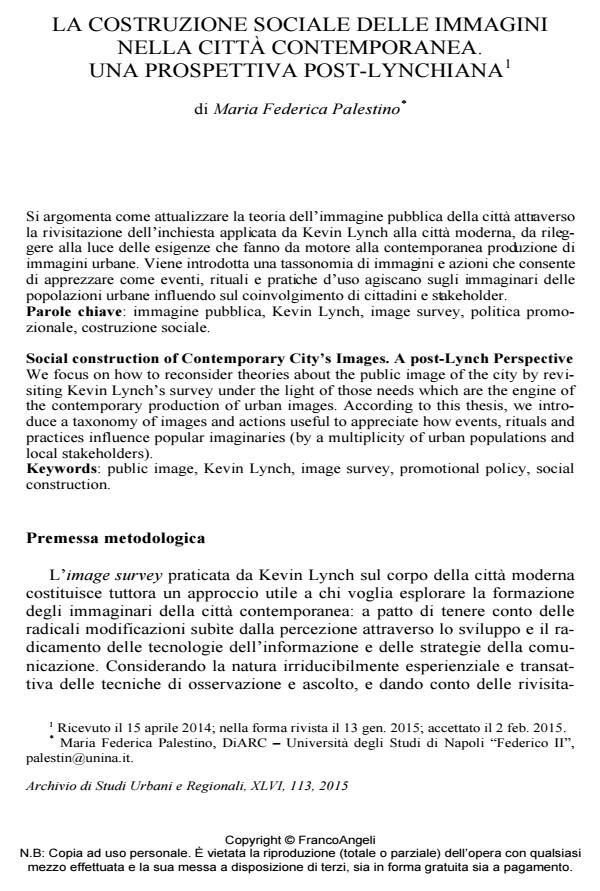Social construction of Contemporary City’s Images. A post-Lynch Perspective
Journal title ARCHIVIO DI STUDI URBANI E REGIONALI
Author/s Maria Federica Palestino
Publishing Year 2015 Issue 2015/113
Language Italian Pages 21 P. 23-43 File size 107 KB
DOI 10.3280/ASUR2015-113002
DOI is like a bar code for intellectual property: to have more infomation
click here
Below, you can see the article first page
If you want to buy this article in PDF format, you can do it, following the instructions to buy download credits

FrancoAngeli is member of Publishers International Linking Association, Inc (PILA), a not-for-profit association which run the CrossRef service enabling links to and from online scholarly content.
We focus on how to reconsider theories about the public image of the city by revisiting Kevin Lynch’s survey under the light of those needs which are the engine of the contemporary production of urban images. According to this thesis, we introduce a taxonomy of images and actions useful to appreciate how events, rituals and practices influence popular imaginaries (by a multiplicity of urban populations and local stakeholders).
Keywords: Public image, Kevin Lynch, image survey, promotional policy, social construction
Maria Federica Palestino, La costruzione sociale delle immagini nella città contemporanea. Una prospettiva post-lynchiana1 in "ARCHIVIO DI STUDI URBANI E REGIONALI" 113/2015, pp 23-43, DOI: 10.3280/ASUR2015-113002